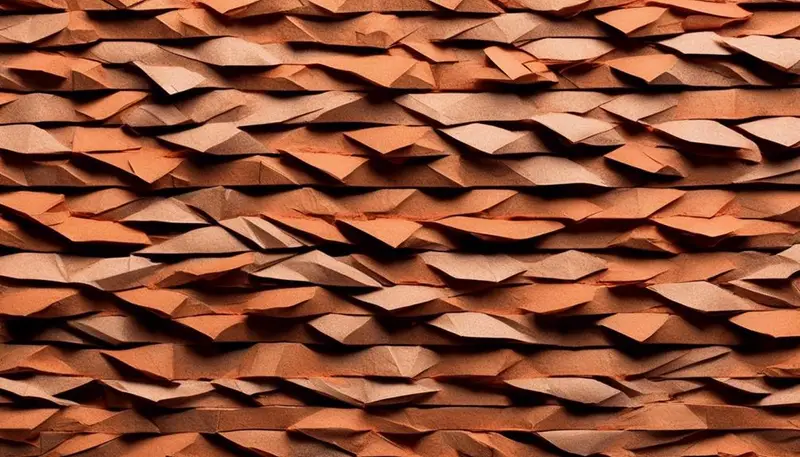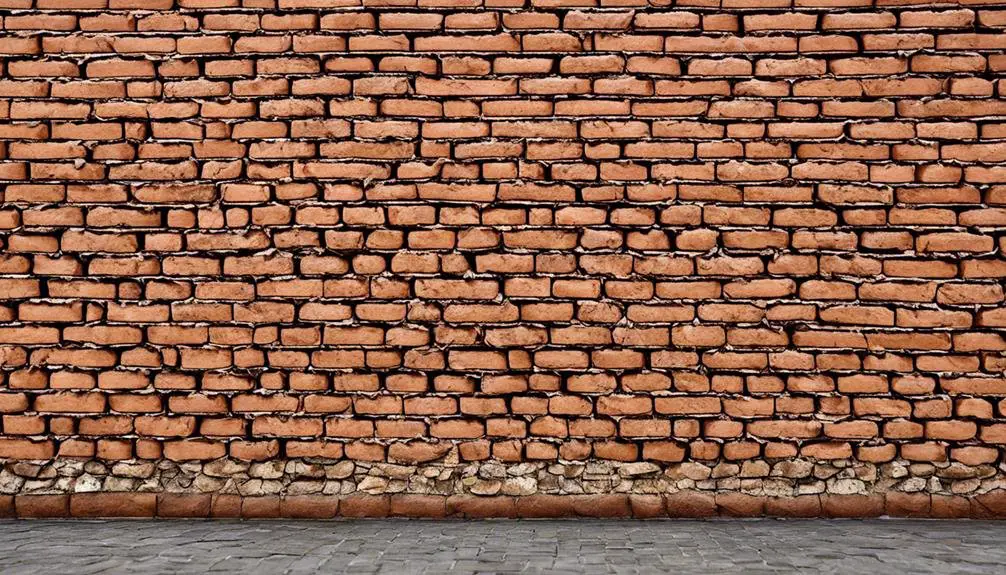Takeaways:
- Brick sealing offers numerous benefits such as enhancing the natural color and texture of bricks, protecting against external elements, and extending the life of brick structures.
- However, there are drawbacks to consider, including limitations on brick breathability, potential moisture trapping and internal damage, and the need for regular maintenance and reapplication of sealant.
- One of the risks of moisture trapping is the deterioration of brick and mortar, the formation of efflorescence stains, and the growth of mold and mildew.
- Long-term structural concerns include the weakening of mortar joints, the proliferation of mold and mildew, and freeze/thaw damage leading to spalling and cracking.
| Pros of Sealing Brick | Cons of Sealing Brick |
|---|---|
| Enhances durability and resistance to weather | Cost and maintenance |
| Prevents mold and staining | Traps moisture |
| Improves appearance | Reduced breathability |
| Protection against UV rays | Risk of incorrect application |
| Prevents weed growth | Potential for peeling and flaking |
| Improves insulation | Long-term structural concerns |
| Easy to clean | Alteration of brick’s natural appearance |
| Protection against salt damage | Difficulty in matching sealed areas |
| Prevents efflorescence | Environmental concerns |
| Increases property value | Decreased permeability to water vapor |
Pros of Sealing Brick
- Enhances durability and resistance to weather: Sealing brick with a high-quality sealant can significantly enhance its durability and resistance to adverse weather conditions. This is because the sealant acts as a protective layer that shields the brick from moisture, UV rays, and temperature fluctuations, thereby prolonging its lifespan and maintaining its structural integrity.
- Prevents mold and staining: Applying sealant to brick surfaces helps in preventing the growth of mold and mildew, which are common issues in damp conditions. The sealant blocks moisture from penetrating the brick, which is essential in preventing the conditions that allow mold and mildew to flourish. Additionally, it helps in avoiding stains caused by water, dirt, and other substances, keeping the brickwork looking clean and new for longer periods.
- Improves appearance: Sealing brick can significantly enhance its appearance by bringing out the natural color and texture of the brick. The sealant can give the brick a slightly glossy or matte finish, depending on the type used, which can enrich the visual appeal of the brickwork. This is particularly beneficial for enhancing the aesthetic value of homes and buildings.
- Protection against UV rays: UV rays can fade and damage the surface of bricks over time. A sealant provides a protective layer that reflects UV rays, thereby preventing them from causing the brick to fade. This helps in maintaining the vibrant color and appearance of the brickwork for many years.
- Prevents weed growth: By sealing the gaps and pores in brickwork, sealants help in preventing the growth of weeds and other unwanted vegetation. This is particularly useful for brick pavements and driveways where weed growth can be a nuisance and affect the appearance and structural integrity.
- Improves insulation: Applying sealant to brick can improve its insulation properties by filling in gaps and pores. This can lead to better energy efficiency in homes and buildings by reducing heat transfer through the walls, potentially resulting in lower heating and cooling costs.
- Easy to clean: Sealed brick surfaces are easier to clean compared to unsealed ones. The sealant creates a smooth surface that repels water and dirt, making it easier to wash away any debris with minimal effort.
- Protection against salt damage: For properties located in coastal areas or where de-icing salts are used during winter, sealing brick can protect against salt damage. The sealant prevents salt from penetrating the brick and causing corrosion or disintegration.
- Prevents efflorescence: Efflorescence, a white powdery residue that can form on bricks, is caused by water bringing salt to the surface. Sealing brick helps in preventing water from penetrating the brickwork, thus reducing the likelihood of efflorescence.
- Increases property value: The improved appearance, durability, and low maintenance of sealed brick can contribute to an increase in property value. Potential buyers may find the enhanced aesthetic appeal and the protective benefits of sealed brickwork to be attractive features.
Cons of Sealing Brick
- Cost and maintenance: Sealing brick can be expensive, especially for large areas or when professional services are required. Additionally, sealants need to be reapplied periodically, typically every few years, which adds to the long-term maintenance cost.
- Traps moisture: Non-breathable sealants can trap moisture inside the brick, which can lead to structural issues over time. Moisture trapped within the brickwork can cause damage to the brick and mortar, potentially leading to costly repairs.
- Reduced breathability: Sealants can reduce the natural breathability of brick, preventing moisture from escaping. This can lead to a buildup of moisture within the wall system, which can cause various problems, including mold growth, efflorescence, and deterioration of the brick and mortar.
- Risk of incorrect application: If not applied correctly, sealants can lead to uneven coverage, streaking, or a patchy appearance. This not only affects the aesthetic appeal of the brickwork but can also compromise its protective qualities, leading to areas that are more susceptible to damage.
- Potential for peeling and flaking: Some sealants, especially those of lower quality, can peel or flake over time. This not only detracts from the appearance of the brickwork but also requires additional maintenance to remove and reapply the sealant.
- Long-term structural concerns: Over time, the trapped moisture and reduced breathability can weaken mortar joints and lead to long-term structural concerns. These issues may not be immediately apparent but can result in significant damage and repair costs in the future.
- Alteration of brick’s natural appearance: While sealants can enhance the appearance of brick, they can also alter its natural look. Some homeowners may prefer the natural, unsealed appearance of brick and find that sealants give the brickwork an unnatural sheen or color enhancement.
- Difficulty in matching sealed areas: If part of a brick surface needs to be repaired or replaced, matching the sealed areas can be difficult. The new or repaired bricks may not absorb the sealant in the same way as the older bricks, leading to discrepancies in appearance.
- Environmental concerns: The production and application of some brick sealants involve chemicals that can be harmful to the environment. Users concerned about their environmental footprint may consider the use of sealants to be a negative aspect.
- Decreased permeability to water vapor: Decreased permeability can lead to increased pressure on other parts of a building’s envelope, potentially causing moisture to be redirected to areas that are less capable of handling it. This can exacerbate moisture-related issues in other parts of the structure, leading to a broader range of maintenance issues.
Advantages of Brick Sealing
Sealing bricks offers a myriad of benefits, chief among them being the enhancement of the material’s natural color and texture while safeguarding it from environmental aggressors. The application of a suitable sealant magnifies the vibrancy and richness of a brick’s appearance, making it more visually appealing. This process acts as a barrier that repels dirt, dust, and other external elements, ensuring the brickwork remains clean and well-maintained over extended periods.
Moreover, sealants provide bricks with a layer of protection against the adverse effects of freezing temperatures. By preventing water absorption, the risk of damage from freeze-thaw cycles is significantly reduced, thereby saving homeowners from costly repairs. This protective quality of sealing extends the life of brick structures, making it a cost-effective solution for maintaining the integrity of brickwork.
Another advantage of sealing bricks is the improvement in insulation against heat transfer. This enhancement in thermal efficiency can contribute to a more stable and comfortable indoor environment, potentially leading to energy savings. By increasing the insulation properties of brick, sealants can help in maintaining temperature consistency within a building, adding another layer of utility to this preventive maintenance step.
Enhanced Surface Durability

By fortifying the brick surface against the elements, sealing notably extends its longevity and reduces the potential for weather-induced deterioration. The application of sealants adds a protective layer that shields bricks from the erosive effects of wind, rain, and fluctuating temperatures, which can lead to weathering and water damage over time. Consequently, sealed bricks maintain their structural integrity and aesthetic appeal for extended periods, diminishing the frequency of maintenance and repairs required.
Additionally, the barrier provided by sealants minimizes the occurrence of efflorescence, a common issue where soluble salts migrate to the surface of the bricks, creating an unsightly white powdery residue. By preventing the penetration of water, sealing helps to inhibit this process, preserving the original color and finish of the brickwork.
The added durability also translates into better insulation and energy efficiency for buildings. Sealed bricks contribute to a more stable internal environment by resisting moisture ingress, which can compromise thermal performance. Ultimately, enhanced surface durability through sealing not only safeguards the brickwork but also contributes to the overall energy conservation of the structure.
Protection From Weather Elements

Building upon the concept of enhanced surface durability, the protective measures offered by sealants also serve as a bulwark against a variety of weather conditions, effectively safeguarding brick exteriors from the deleterious effects of moisture and extreme temperatures. When a brick surface is sealed, its exposure to the elements is mitigated, thus preserving the structural integrity and aesthetic appeal of the brickwork.
The application of sealant provides several key advantages:
- Water Damage Prevention: By repelling water, sealants prevent the penetration of moisture, which is especially critical during freeze-thaw cycles that can cause bricks to crack and spall.
- Efflorescence Reduction: The unsightly white powdery substance that often forms on unsealed bricks is minimized, as the sealant acts as a barrier, preventing the migration of water-soluble salts to the surface.
- Mold and Mildew Growth Inhibition: Sealed bricks provide less hospitable conditions for biological growth, keeping the surfaces cleaner and healthier over time.
In essence, sealing not only enhances the appearance of the bricks by preserving their natural color and texture but also increases the lifespan of the brickwork by providing a protective barrier against the deteriorating forces of nature.
Prevention of Mold and Stains

Sealing brickwork can play a crucial role in thwarting the growth of mold, which thrives in damp and porous materials.
The application of a sealant provides a barrier against moisture, making the bricks resistant to unsightly stains that can compromise their aesthetic and structural integrity.
Furthermore, sealed surfaces are generally easier to maintain and clean, reducing the need for frequent and laborious upkeep.
Mold Growth Inhibition
Applying a sealant to brick surfaces effectively wards off moisture, thereby curtailing the growth of mold and mildew and keeping the masonry stain-free. This preventative measure is essential for maintaining the aesthetic and structural integrity of brickwork.
By envisioning the following scenarios, one can appreciate the benefits of mold growth inhibition:
- A pristine brick facade that resists the unsightly black and green patches indicative of mold and mildew.
- A cozy living space where walls remain untouched by the blotches and streaks that moisture can cause.
- A lasting edifice where the bricks retain their original character and strength, unmarred by the degradation that mold can instigate over time.
Sealants provide a simple yet effective solution for preserving the beauty and durability of brick structures.
Stain Resistance Benefits
By acting as a shield against moisture and contaminants, sealants enhance the brickwork’s resistance to stains, thus preserving its appearance and structural integrity over time.
The application of a sealant prevents mold and mildew growth, which are common issues in porous materials like brick that can absorb water. This prevention is not only crucial for aesthetic reasons but also for health, as mold can pose risks to indoor air quality.
Moreover, sealants reduce the likelihood of unsightly stains from moisture and dirt, which can be challenging to remove once they penetrate the brick surface. The increased longevity of the brickwork is a direct result of this protective measure.
In addition, this barrier helps maintain the original color and look of the brick exterior, contributing to the overall value and appeal of the property.
Maintenance and Cleanliness Ease
Building on the stain resistance benefits of sealed brickwork, the ease of maintenance and cleanliness is significantly enhanced due to the reduced incidence of mold and mildew. When bricks are sealed, they repel moisture more effectively, which is a primary factor in mold growth. This leads to several practical advantages:
- Moisture Barrier: The sealant acts as a shield, preventing water from seeping into the brick’s porous surface, thereby hindering mold formation.
- Stain Prevention: By repelling water and other substances, sealed bricks are less likely to develop unsightly stains, maintaining their pristine appearance.
- Simplified Cleaning: The need for aggressive scrubbing is diminished since the sealed surface facilitates easy wiping away of dirt and debris, preserving the brick’s integrity.
Drawbacks of Brick Sealing

While sealing brick surfaces offers protective benefits, it also introduces several drawbacks that can compromise the integrity and aesthetic of the masonry. One significant issue is the limitation on brick breathability. Sealants can trap moisture within the brick structure, which may lead to internal damage. Over time, this moisture can expand and contract due to temperature changes, potentially causing the brick to crack or spall.
Furthermore, sealants may lead to discoloration, altering the bricks’ natural and often desirable appearance. This can be particularly problematic for historic or specialized brickwork where maintaining the original look is crucial. The sealed surface might also require regular maintenance, as the effectiveness of the sealant diminishes over time. This necessitates periodic reapplication, incurring additional costs and labor.
The cost of sealing can be substantial, especially for larger areas, making it a significant investment. Homeowners and building managers must evaluate if the long-term benefits outweigh these initial expenditures.
Lastly, in some cases, sealing can be detrimental rather than beneficial. If done incorrectly or with the wrong type of sealant, it can accelerate the deterioration of the bricks, leading to expensive and extensive repairs.
Risks of Moisture Trapping

Sealing bricks, intended as a protective measure, can inadvertently lead to the entrapment of moisture within the masonry, posing significant risks to the structure. The application of sealant may appear to be a straightforward solution for protecting brickwork from the elements, but it is not without its potential pitfalls.
One of the primary concerns associated with sealing bricks is the possibility of moisture becoming trapped within the bricks and mortar, which can have detrimental effects on the integrity of the masonry.
Here are three key risks associated with moisture trapping in sealed brickwork:
- Deterioration of Brick and Mortar: Moisture trapped inside the sealed masonry can lead to the breakdown of the brick and mortar from the inside out, compromising the structural stability of the wall over time.
- Formation of Efflorescence: As moisture accumulates, it can carry salts to the surface of the brick, resulting in unsightly white stains known as efflorescence, which can be difficult to remove and may cause further damage to the masonry.
- Mold and Mildew Growth: The presence of trapped moisture creates an ideal environment for the growth of mold and mildew, which not only poses health risks but can also cause a musty odor and further degrade the appearance of the brickwork.
Long-Term Structural Concerns

When considering the application of sealant to brick structures, it is imperative to acknowledge potential long-term structural concerns. Moisture trapping can lead to a host of issues, including deterioration of the brick and compromised structural integrity.
Furthermore, the longevity and performance of sealants themselves can variably impact the overall stability and maintenance requirements of the building envelope.
Moisture Trapping Risks
Applying sealant to bricks may inadvertently exacerbate moisture retention, potentially compromising the long-term structural integrity of the building. The impervious nature of most sealants means that any moisture absorbed by the bricks before sealing, or that penetrates through cracks, can become trapped. This entrapped moisture can cause various issues that negatively impact the structure over time.
- Freeze/Thaw Damage: Moisture trapped in sealed bricks can freeze, expand, and cause spalling or cracking, leading to structural deterioration.
- Mortar Joint Failure: Continuous moisture retention can weaken mortar joints, resulting in destabilization of the brickwork.
- Mold and Mildew Growth: Persistent dampness within brickwork encourages the proliferation of mold and mildew, compromising both the structural integrity and indoor air quality.
Sealant Durability Issues
Despite their protective intentions, sealants can sometimes compromise brickwork durability due to their susceptibility to damage from environmental factors like freeze/thaw cycles and foundational shifts.
When sealant is applied, it can trap moisture inside the bricks, which in colder climates, can freeze, expand, and cause substantial damage to the mortar and bricks themselves. Over time, small cracks may develop from natural foundation shifts, allowing water to seep in and exacerbate the issue.
While unsealed bricks naturally expel moisture, reducing these risks, sealed bricks do not offer the same breathability. This could potentially lead to more significant harm, undermining the long-term structural integrity of the brickwork.
The potential for such long-term concerns is a critical consideration when deciding whether to apply sealant to brick surfaces.
Conclusion
In conclusion, the application of sealant to brickwork offers several benefits. These include improved durability, weather resistance, and the mitigation of mold and staining.
However, it also introduces potential drawbacks. One of these is the entrapment of moisture, which can lead to structural issues over time.
Therefore, it is imperative for stakeholders to weigh these advantages against the risks. This will help determine the appropriateness of brick sealing in any given context. Ultimately, this consideration is necessary to ensure the long-term integrity and aesthetic appeal of the brick structures in question.










